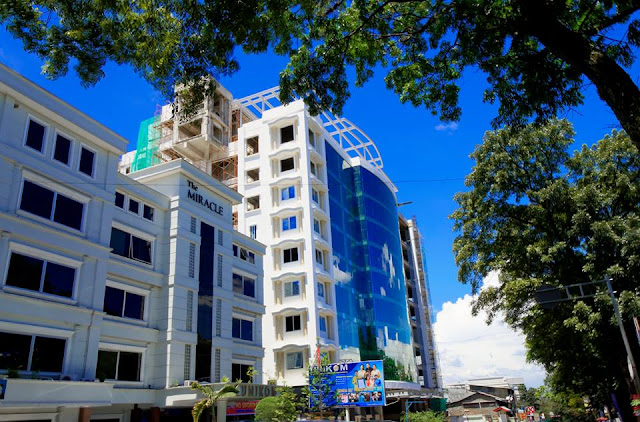
Berbicara
tentang negara Jepang, banyak dari kita yang akan langsung mengingat kartun
Doraemon, Naruto, bunga Sakura, Harajuku style dan lain-lain. Film-film kartun masa kecil yang sangat terkenal, dan keunikan ikon Jepang (Sakura) itu membuat
banyak dari kita sangat kagum. Kekhasan ini membuat Jepang menjadi salah satu
negara yang sangat populer di Dunia. Tidak terkecuali di Dili. Saya kurang tau
apakah ada banyak anak muda yang suka dengan budaya Jepang. Tapi yang saya tau,
Jepang dikenal di Timor-Leste sebagai negara sahabat yang sangat tulus membantu
pembangunan kita dari dulu hingga sekarang. Secara spesifik, orang Jepang dikenal pintar dalam hal civil engineering, seperti membangun jalan, jembatan,
pelabuhan, bandara dan lainnya.
Saya
ingin bercerita sedikit mengenai pengalaman saya bekerja dengan orang Jepang.
Saya tau kalo jaman sekarang, orang bisa belajar mengenai apa saja lewat
internet. Jadi mungkin, pengalaman yang akan saya ceritakan bukan lagi hal yang
wao bagi teman-teman. Tapi dalam konteks pengalaman pribadi, saya ingin
berbagi, siapa tau ada manfaat yang anda bisa ambil dari pengalaman saya ini.
Yang paling penting adalah, bagaimana kita bisa belajar hal-hal positif dari
orang Jepang buat diri kita, masyarakat kita, dan juga negara kita,
Timor-Leste.
Yuk, kita
langsung saja ke ceritanya.
Pertama, orang Jepang Gila Kerja
Pada umumnya, orang Jepang adalah tipe orang penggila kerja (entah
mereka cinta dengan pekerjaan mereka atau sebaliknya, mereka dibudaki oleh
pekerjaan itu sendiri.. entah-lah). Mereka betah untuk tetap dikantor sampai
berlarut malam hanya untuk menyelesaikan pekerjaan yang mungkin bagi kita, ahh,, pekerjaan ini dapat saya selesaikan
besok, namun tidak bagi mereka. Disini saya bertanya-tanya, apakah mereka
tidak mempunyai kehidupan lain selain bekerja? Dan kadang saya melihat mereka
sanggup melewatkan jam makan (entah makan siang atau makan malam) mereka dengan
duduk manis di depan komputer tanpa
merasakan lapar sekalipun. Dan kadang kita juga dibuat untuk bekerja dibawah
tekanan. Salah satu contoh kecilnya terjadi pada saya, ketika jam kantor
selesai, saya tidak dapat langsung begitu saja meninggalkan meja saya dan berlenggak
pulang dengan riang selama atasan
saya masih berada didalam ruangannya (kesel, pengen nangis itu yang saya
rasakan). Saya diharuskn bertanya kepada-nya, ‘’ Apakah saya sudah bisa pulang,
Sir?’’ kalau dia meng-iya-kan, maka dengan riang kaki ini
melangkah dengan cepat meninggalkan kantor (sebelum si Sir ini berubah pikiran), namun, jika dia mengatakan, ‘’ Oh, saya
masih membutuhkan kamu, jadi jangan pulang dulu’’ (oh com’on). Dan ini berlaku
bagi saya setiap hari.
Berbeda
dengan sistem yang dianut orang Timor-Leste, begitu jam kantor selesai anda
langsung pulang tanpa harus izin
kepada atasan anda, kecuali anda lembur. Dan anda-pun boleh meninggalkan kantor
sebelum jam kantor itu usai (super
sekali…hahahaa)
Kedua, budaya Orang Jepang Berbeda 180˚
Saya benar-benar
menyadari perbedaan budaya itu diminggu pertama saya bekerja. Saya kurang
begitu paham mengenai budaya orang Jepang dalam memberikan ‘’salam’’ (seperti:
Ohayou Gozimasu) dengan cara membungkuk. Ini sedikit berbeda dengan negara
Timor-Leste, anda tidak perlu bersusah payah memberikan salam kepada atasan
anda dengan cara membungkuk. Dan, cara orang Jepang dalam memberikan salam
dengan membungkuk-pun sedikit berbeda terhadap atasan yang tingkatan-nya lebih
tinggi, anda harus benar-benar membungkuk disini (bener-bener dah). Ini
menunjukan rasa hormat kita terhadap mereka. Awalnya saya hanya sekilas
membungkuk dan menganggap ini hal yang biasa, namun tidak bagi atasan saya. Selang beberapa minggu dia memanggil
saya ke ruangannya dan mengajari saya tentang adat istiadat, budaya, dan
hal-hal yang berhubungan dengan Jepang dan lambat-laun meskipun saya merasa
sedikit aneh pada awalnya (hahahahaa), namun saya bisa membiasakan diri
dengan budaya mereka hingga sekarang.
Ketiga, tidak ada kata TIDAK dalam kamus orang Jepang
Yah,
tidak ada kata TIDAK ketika anda
bekerja dengan orang Jepang. Itu yang saya dan mungkin bagi anda yang pernah
bekerja dengan mereka bisa merasakannya. Segala pekerjaan seperti apapun yang
mereka perintahkan harus anda terima dan katakan YES,SIR atau YES, MA’AM, meskipun anda tahu, kadang apa yang mereka
perintahkan kurang masuk akal (tidak semuanya sih, namun ada sebagian yang
menurut saya begitu..hahahaaaa). Bahkan hal sederhana dapat menjadi sulit
ketika anda deal dengan orang Jepang.
Saking sistematisnya, mereka tidak akan mengambil jalan potong (percaya deh)
dalam mempermudah pekerjaan mereka, walaupun hal itu dapat menghemat waktu mereka.
Sangat berbeda
dengan Timor-Leste, suka memotong jalan dan tidak sitematis pula
(hahahahahaha).
Dan
sebenarnya, masih banyak surprise-surprise
lainnya lagi yang akan anda dapatkan ketika bekerja dengan orang Jepang dan
akan memberikan anda (sedikit) serangan
jantung ringan,hahahahaha. Saran saya sih, anda harus memiliki mental baja ketika bekerja dengan
mereka. Karena mereka malas tahu, anda dibayar, jadi anda harus melakukan
apapun bentuk pekerjaan itu. Seperti kata salah satu teman saya yang mengatakan,
‘’ kita ini seperti robot-nya mereka,
hahahaa ‘’.
Namun dari
semuanya itu, ada hal-hal yang saya pelajari dari mereka dan patut dicontoh
oleh kita seperti, mereka sangat menghargai waktu; mereka menghargai proses
bukan hasilnya; mempunyai loyalitas yang tinggi; suka membaca; jika mereka
bepergian ke negara mereka, mereka tidak akan pernah lupa untuk membawakan
sesuatu untuk anda yang berciri-khas-kan
negara mereka (omiyage) dan tentunya,
mereka tidak pernah telat dalam membayar gaji karyawannya (itu yang saya suka,
hahahaha). Saya pikir masih banyak hal-hal baik lainnya yang bisa kita petik
ketika bekerja dengan mereka. Mungkin bisa anda tambahkan sendiri.
Semoga cerita saya ini bisa menginsiprasi anda.









